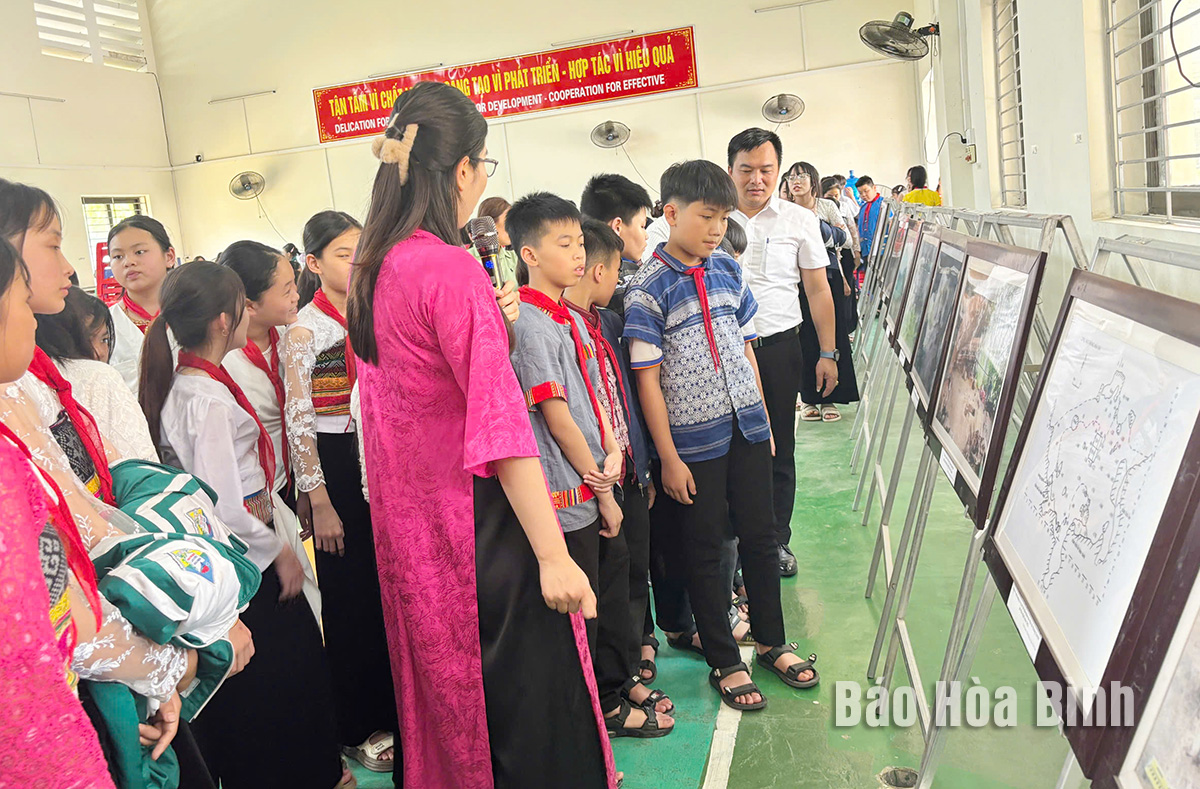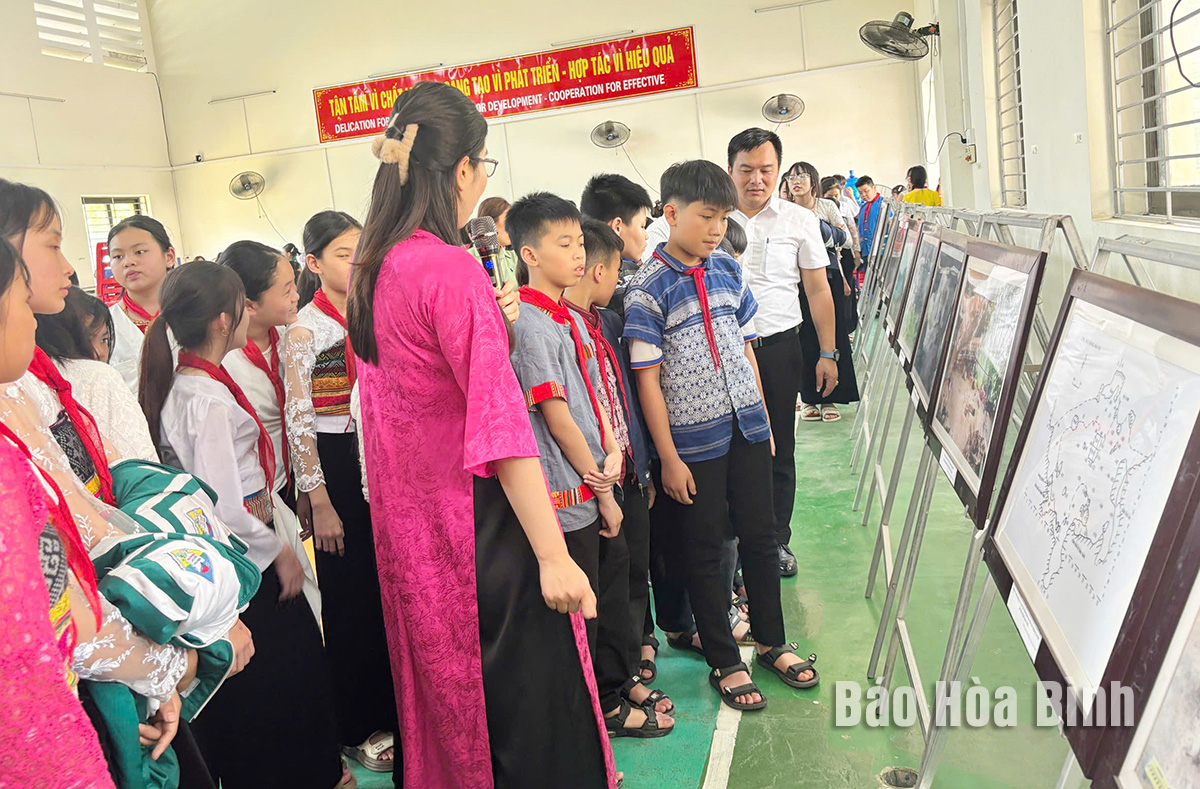
On April 17th, Hoa Binh Provincial Museum organized a program to promote and introduce the outstanding values of "Hoa Binh Culture” at the Boarding Secondary and High School for ethnic minority students in Mai Chau District.

The museum’s officials
provided a wealth of information about the "Hoa Binh Culture” to the students
of the Boarding Secondary and High School.
During
the program, the officials from the Provincial Museum shared the valuable
insights about "Hoa Binh Culture”. Thí is a
prehistoric archaeological culture from the Stone Age, which is famous not only in Vietnam but it also is influential
in many Southeast Asian countries. Dating back approximately 30,000 to 7,500
years ago, "Hoa Binh Culture” serves as the evidence of the long-standing
history and rich cultural traditions of Hoa Binh people.
In
Mai Chau District, there are currently five archaeological sites associated
with the "Hoa Binh Culture”: Khau Puc Cave (also known as Thoc Giong Cave), Dan
Dua Rock Shelter, Phung Quyen Rock Shelter, Lang Cave and Khoai Cave. Among
them, Lang Cave (recognized as a national heritage site in 2005) and Khoai Cave
(recognized in 1997) are considered the most representative.
The
results of archaeological research and excavations in Mai Chau have provided
important materials for the history education and have helped
clarify the natural and social development process of "Hoa Binh Culture.” These
findings also serve as a foundation for the locality to develop the unique
cultural-archaeological tourism products that cater to the needs of visitors,
students and researchers.
Through
the program, the students gained a deeper understanding of the cultural roots
of the nation, helping to foster a sense of responsibility in preserving and
promoting the cultural heritage, and contributing to spreading the love
for the homeland and the country throughout the community.
The emulation movement "Hoa Binh joining hands to build new-style rural areas” has been widely spreading, becoming a driving force that motivates the localities to renew rural landscapes and improve the material and spiritual lives of the residents. In this movement, the people play a central role-both as the main implementers and direct beneficiaries of its outcomes.
In response to the global digital revolution, Hoa Binh Newspaper is transforming itself into a modern and multi-platform media hub, blending cutting-edge technology with a restructured newsroom and a new generation of tech-savvy journalists.
Hoa Binh province’s Association of the Elderly recently held a conference to review the project on expanding the inter-generation self-help club model until 2025.
In a move to implement Resolution No. 57-NQ/TW, issued on December 22, 2024 by the Politburo, which targets breakthroughs in science-technology development, innovation, and digital transformation, the Hoa Binh provincial Department of Health has issued a plan to roll out the "Digital Literacy for All” campaign within the local health sector.
An Nghia Commune (Lạc Sơn District) is one of the communes that achieved the tha standard of the national new rural area in 2018. Entering a new development phase, the commune is now trying to meet the criteria for the advanced new rural development. With the strong political will and the public consensus, the commune is gradually overcoming the challenges to reach this goal, aiming for the sustainable development.



